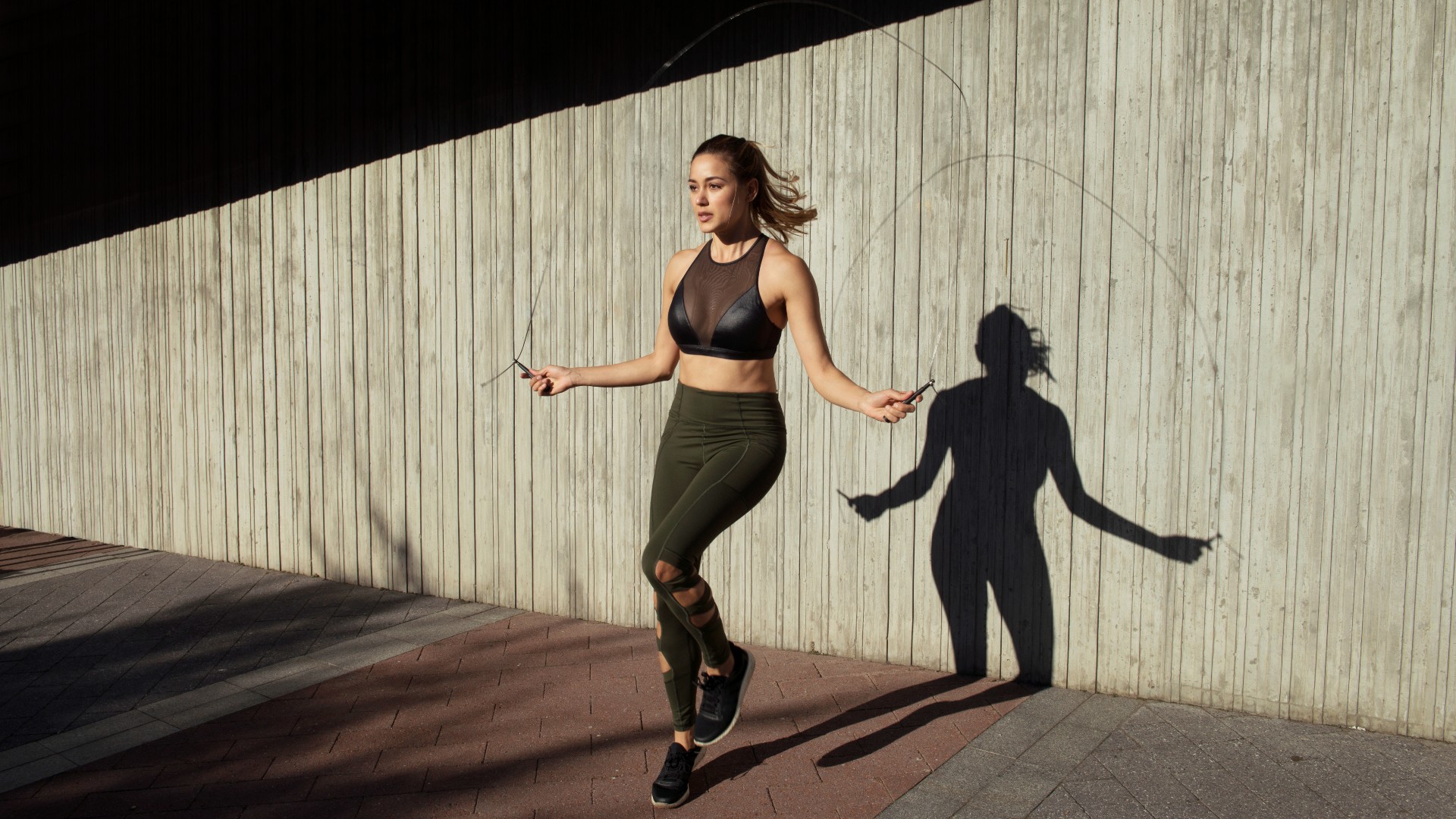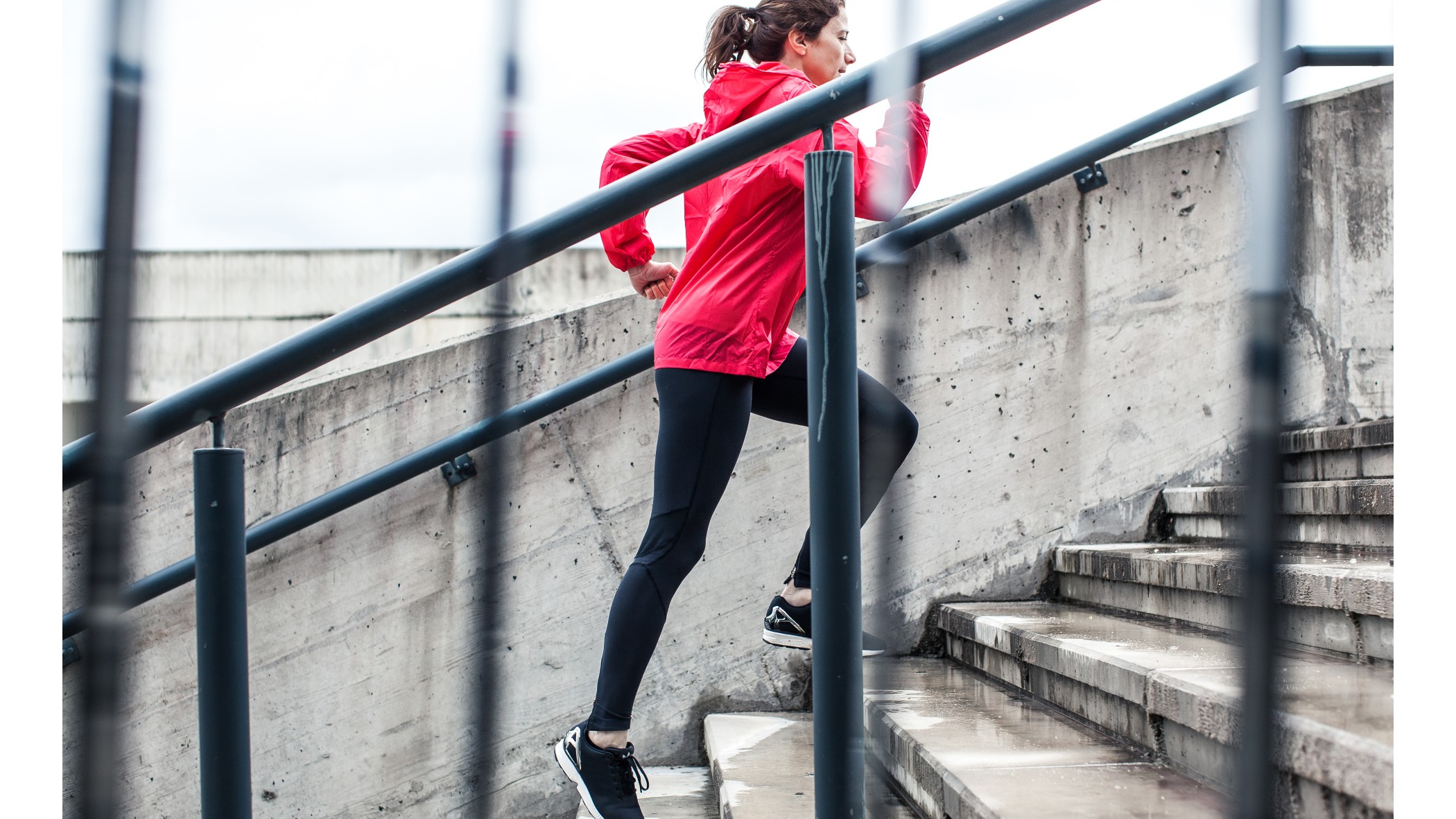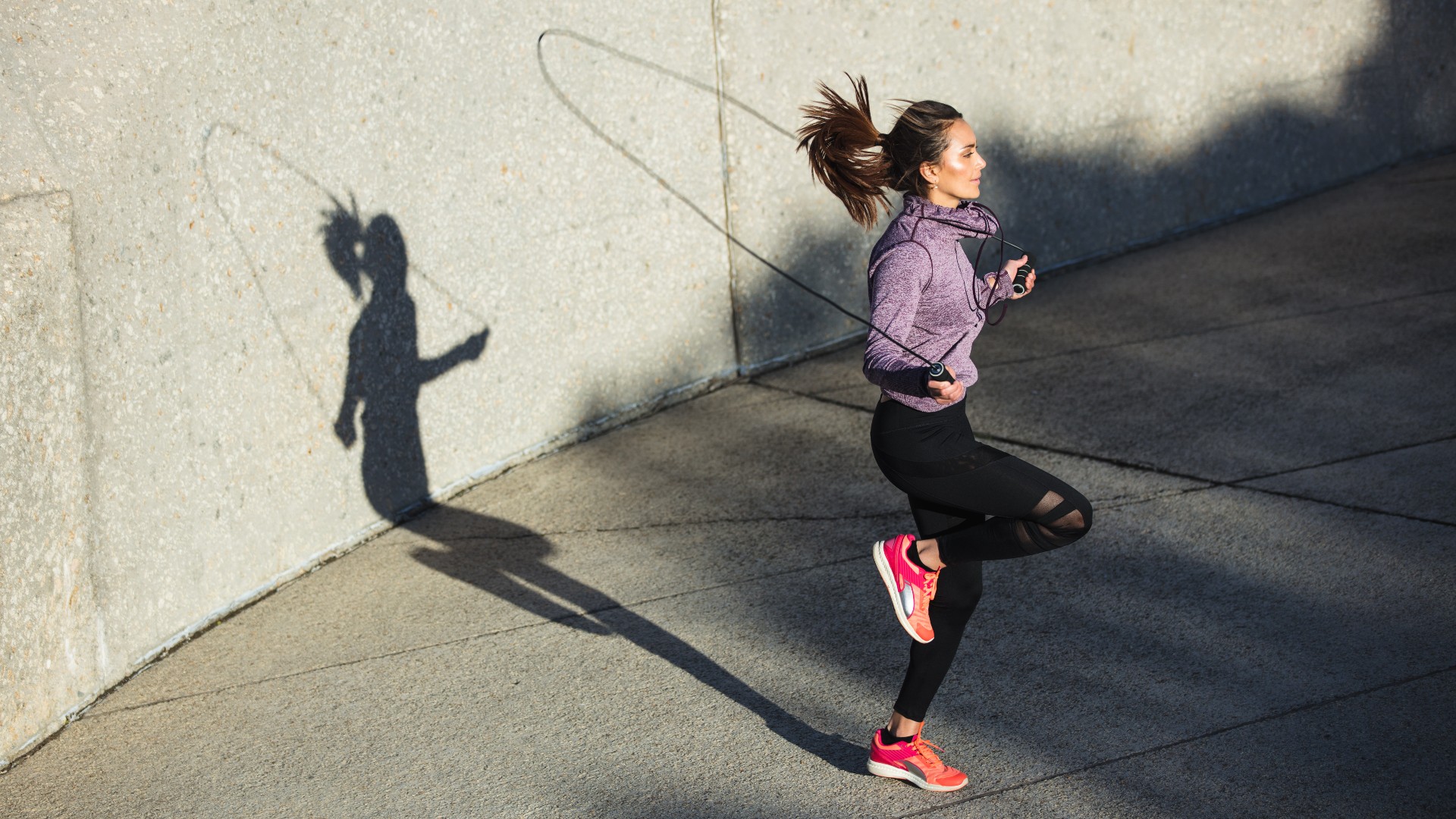
Jumping rope has come on leaps and bounds since the days of the playground, offering jumpers the chance to improve cardio fitness, build stronger muscles, and burn calories, but could it burn more calories than running? We tasked ourselves to find out.
Jump rope workouts typically crop up in CrossFit style classes, but the trend has officially taken over TikTok with a staggering 2.7 billion views under #jumprope. While you might have steered clear of jump ropes since your school days, the sport packs far more benefits than a bit of lunchtime fun. In fact, I tried jumping rope every day for a week and needed an extended nap afterward.
But you don’t need to whip out impressive footwork and rapid double-unders to ramp up your heart rate, torch calories, and significantly up the ante on your cardio. Even just trying jump rope can offer health benefits like more confidence and reduced anxiety, according to a Piedmont study.
But is jumping rope better at burning calories than running? We sifted the research and spoke to the director of Elite SRS, Dan Cox, to discover if you could put a number on calorie burn and if so, which one comes out top. Grab one of the best jump ropes and jump in.
Running vs jumping rope: benefits
Alongside a wealth of research, Cox says that jumping rope can build stronger ankles and feet and increase speed and agility by improving your right brain-left brain dexterity and coordination. Contrary to popular belief, it’s also low-impact when done properly, which should help you to build lower-body strength without impacting your hip, knee, or ankle joints.
Jumping rope and running tackle most of your muscles, including your core muscles, hamstrings, quads, calf muscles, glutes, shoulders, and back muscles. Both also sit firmly in the cardio camp and contribute towards a process called bone loading — building stronger bones.
The benefits of running are similar to jumping rope — the exercise can strengthen your leg muscles, improve bone density and cardio fitness, and boost mood. And if you’ve ever wondered — does running build muscle? It can certainly contribute towards stimulating muscle growth. You can also find out how to lose weight by running here.
Get instant access to breaking news, the hottest reviews, great deals and helpful tips.

Running vs jumping rope: which one burns more calories?
“This one is really fun!” Cox says. “There is evidence to suggest jump rope is a higher calorie burn than jogging and running. Like any exercise, it depends on intensity, your body weight, age, and more.”
Cox adds that emerging research conducted alongside jump rope athlete Kaylee Woodard PhD, exercise science professor at Bowling Green, found practicing new jump rope tricks (and missing) burns as many calories as a steady-state activity like basic jump rope — if not more. “The trick is to keep the intensity level up after missing and not taking prolonged breaks,” he says. “Failing at jump rope but progressing is better for calorie burn.” Good news for me, then.
Running and jumping rope are considered high-calorie burners that can support weight loss. While you can’t put an exact number on any exercise — you can estimate. Factors like hormones, diet, fitness level, age, and sex determine how likely you are to blitz calories during a workout. You can discover how to calculate your body fat percentage and why it matters here.

The Omni Calculator uses the 2011 Compendium of Physical Activities and estimates jump rope calorie burn based on weight, minutes jumped, and jump rate (jumps per minute). A person weighing 60kg (132 pounds) could burn roughly 120-130 calories per 10 minutes of jumping rope and around 200 calories per 15 minutes.
Using the same metrics for running based on distance, weight, and speed, the estimated calorie burn for an outdoor 5km run (taking around 30 minutes for the average runner) sits around 160 calories. So if you tot up the maths, two 10-minute jump rope workouts could help you burn between 200-300 calories, whereas a 20-30 minute run would burn less.
How to burn more calories
If you want to burn more calories while running, try running uphill and outdoors. Omni Calculator adds that many experts suggest a person of average weight burns 100 calories running a mile which could increase if you weigh more. Interestingly, calorie burn doesn’t necessarily increase with speed because running efficiency also improves.
According to Cox and the team at Elite SRS, you can expect to burn more calories jumping rope if you adopt high-intensity style training like Tabata — this is our favorite dumbbell Tabata workout to add jump rope into. Adding bodyweight exercises like squats and burpees between rounds can offer an intense burst that will tap into fat burn and boost metabolism for hours after, compared with steady-state running.
Cardio aside, weighted jump ropes incorporate strength training into your program by working your muscles harder and further increasing calorie burn. If fat loss is your goal, research by Atkinson and Reilly suggests that saving any cardio for your morning workouts could encourage fat metabolism. Early doors, cortisol and testosterone peak while glucose and insulin drop, so your body may favor fat stores as an energy source!
Our verdict? Running and jumping rope are very different exercises packing their own wealth of benefits, but if you're looking to burn calories fast, jumping rope could deliver quicker results.
Jump rope workout
Try this spicy 16-minute jump rope HIIT workout by the Elite SRS team to blitz calories. It’s suitable for a beginner’s jump rope workout, but whatever your experience level, this could get Rocky himself sweating.
The routine forms four 4-minute AMRAPs (as many rounds as possible) with a one-minute rest between exercise blocks. Aim for 50-75 jumps (depending on your ability) with your jump rope, followed by a set number of reps of your bodyweight exercise, repeated as many times as you can in four minutes. Bodyweight exercises include squats, push-up shoulder taps, alternating V-ups, and burpees.
Check out the video for tips on perfect form and a step-by-step of the full workout before you get started.
More from Tom's Guide
- Best cross-training shoes
- I don’t recommend calorie counting
- 5 exercises that burn more calories than running
- 100 dumbbell chest presses a day for a week — and here's what happened.

Sam Hopes is a level 3 qualified trainer, a level 2 Reiki practitioner and fitness editor at Tom's Guide. She is also currently undertaking her Yoga For Athletes training course.
Sam has written for various fitness brands and websites over the years and has experience across brands at Future, such as Live Science, Fit&Well, Coach, and T3.
Having coached at fitness studios like F45 and Virgin Active and personal trained, Sam now primarily teaches outdoor bootcamps, bodyweight, calisthenics and kettlebells.
She also coaches mobility and flexibility classes several times a week and believes that true strength comes from a holistic approach to training your body.
Sam has completed two mixed doubles Hyrox competitions in London and the Netherlands and finished her first doubles attempt in 1:11.
